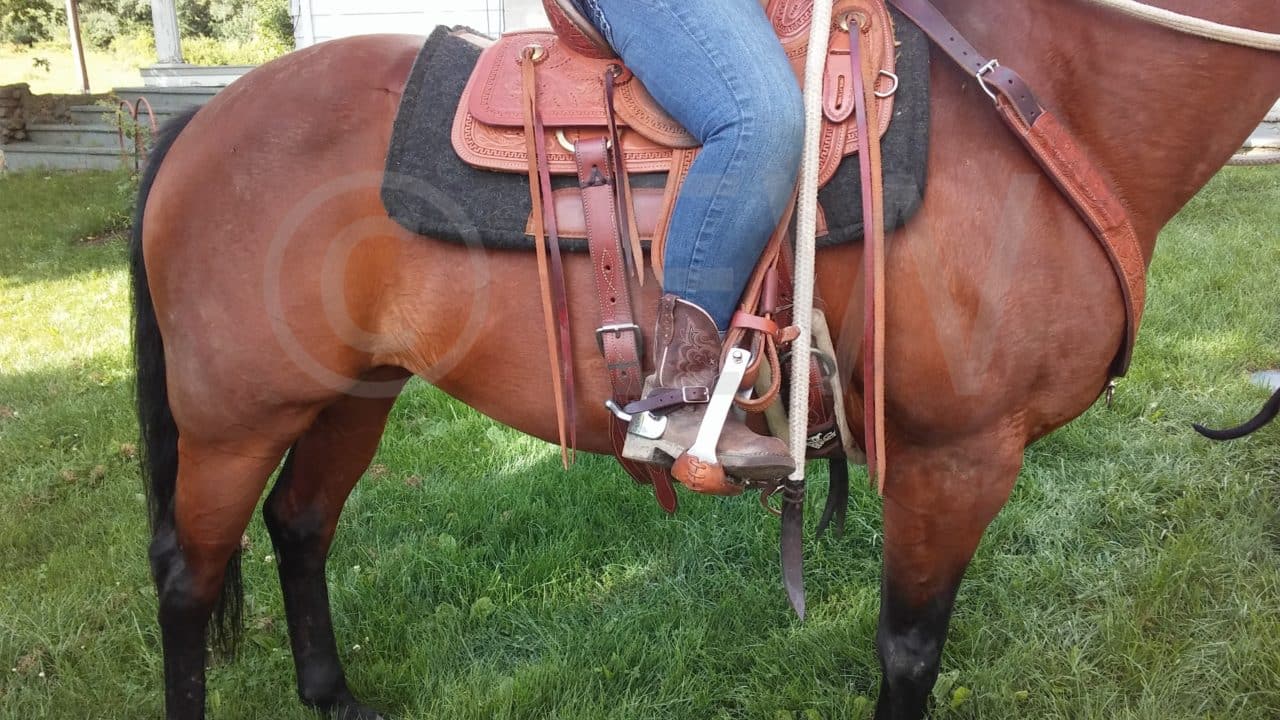
This is part 3 of a series covering my 3 most important exercises that every horse needs to know to make them a safe riding companion:
- Lunging
- Lateral flexion at the poll (not in the neck)
- Yielding the hindquarters
We’ve already covered lunging and lateral flexion of the poll. Now we are moving on to yielding the hindquarters.
Why is it important?
Think of the hindquarters as the engine in your car. If the engine shuts down, the car stops. The same principle applies with your horse. How do you shut down the engine? Yield the hindquarters. This disengages the hind end and shuts down the “engine.”
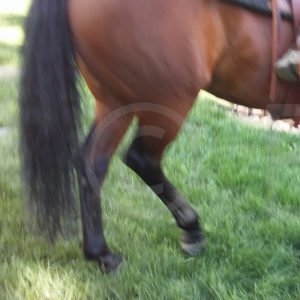 This is useful in many situations. If you horse spooks, bolts, rears, bucks, or really does anything that makes you feel unsafe, this exercise acts as your safety net. It is just physics. For a horse to bolt, rear, or buck he must have his hindquarters underneath him. No horse on earth can run when his legs are crossed. That’s why yielding is also called “disengaging.”
This is useful in many situations. If you horse spooks, bolts, rears, bucks, or really does anything that makes you feel unsafe, this exercise acts as your safety net. It is just physics. For a horse to bolt, rear, or buck he must have his hindquarters underneath him. No horse on earth can run when his legs are crossed. That’s why yielding is also called “disengaging.”
Now, here’s the key part. You shouldn’t do these exercises out of order. They are sequenced this way for a reason. Lunging gets the horse to calm down and focus on the rider, hence why it is the first thing I do with a horse. Lateral flexion at the poll loosens the horse up and makes them much softer and more receptive to further training. Both steps are important to get correct before moving on to yielding the hindquarters.
Stage 1: Yield the Hindquarters from the Ground
Like the lunging, this will be broken down into smaller stages. First, we need to teach the horse to yield the hindquarters from the ground. We will do this with the horse fully tacked up.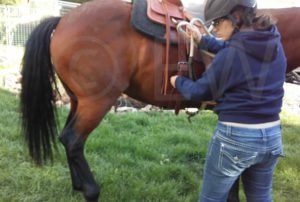
For ease of explanation we will say that you are starting on the right side since that is the side I took the pictures on, but you can start on either side. Put your right hand on the rein, but don’t pick up contact yet. With your left hand, make a fist (like you were holding a rein) with your thumb laying on top. Place your thumb into the horse’s side just behind the rear cinch. Apply steady pressure. If the horse does not respond, while still applying pressure with your left hand, with your right hand, pick up the contact with the rein towards the pommel of the saddle, tipping the nose 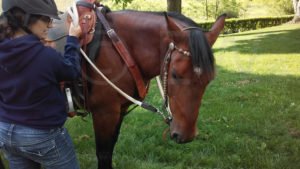 to the inside. If the horse still does not respond, kiss or cluck. This should result in him stepping away from you with his hind end. As soon as he takes a step away, release all cues with both hands immediately.
to the inside. If the horse still does not respond, kiss or cluck. This should result in him stepping away from you with his hind end. As soon as he takes a step away, release all cues with both hands immediately.
In the beginning, any step with the hindquarters away from you should be rewarded. Once the horse gets the concept, only steps that involve the inside hind leg (the leg closest to you, in this case the right leg) crossing in front of the outside leg should be rewarded.
Stage 2: Yield the Hindquarters Under Saddle
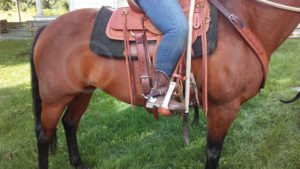
Once the horse has mastered yielding the hindquarters on the ground from both sides, it is time to move to under saddle. To begin with, you start while the horse is standing still. Start with whichever side your horse was best on while doing the exercise on the ground. Put your foot back by the rear cinch, the same spot where you pressed your thumb. Tilt the horse’s nose to the side. Kiss or cluck. If your horse is particularly unresponsive, you may want to have a dressage whip handy to give him a light tap on the rear to get him moving. As soon as he steps away with the hind end, release.
You will note that in some photos I am using spurs. I only recommend using spurs if you have a good enough seat to use them correctly and judiciously. I prefer to save them for refinement after the horse already understands the concept.
Here is the final key. Don’t demand too much too soon. I rarely ask for more than 3 steps at a time. Why? This  is actually something I learned at a Ranch Riding clinic that I recently attended. If you try to ask for full circles, you get so caught up in quantity that you get sloppy and sacrifice quality. Most people don’t need to be able to do a full circle hindquarter yield. I’ve never encountered a show pattern that demanded it. But if your horse get perfect at doing 3 steps of a yield, then it is quite simple to just string those steps together if you ever do need a full yield.
is actually something I learned at a Ranch Riding clinic that I recently attended. If you try to ask for full circles, you get so caught up in quantity that you get sloppy and sacrifice quality. Most people don’t need to be able to do a full circle hindquarter yield. I’ve never encountered a show pattern that demanded it. But if your horse get perfect at doing 3 steps of a yield, then it is quite simple to just string those steps together if you ever do need a full yield.
Troubleshooting
If your horse fights you when you attempt to tip his nose to the inside, I would go back to flexing the poll before continuing to teach yielding the hindquarters. It is vitally important that you get each step solid before moving on to the next.
If your horse tries to walk forward a step or two out of it, don’t worry too much. A good hindquarter yield actually requires forward motion, so don’t be too quick to shut him down from walking a step or two out of it. After a while, he won’t walk out of it as much and you can encourage him to keep his front end in place, but remember not to pick on too many details at once. First, get him moving away from the pressure, then get him crossing over properly. Next, work on getting three steps in a row followed by working on building momentum and making the steps crisper. Save working on not walking out of it for last.
If your horse is REALLY lazy you should go for a swat from a dressage whip first. I prefer a dressage whip over a crop because a dressage whip is long enough that you don’t have to take your hand off the reins to deliver a swat. One sharp swat is more effective than a series of nagging tickles. If you have a solid enough seat and know how to use them properly, spurs might be beneficial for some horses, however I have never met a horse that didn’t respond reasonably well to the dressage whip.
If your horse tries to run into the yield and gets over excited about it you need to go back to lunging at the walk and make sure the horse is completely calmed down and focused.







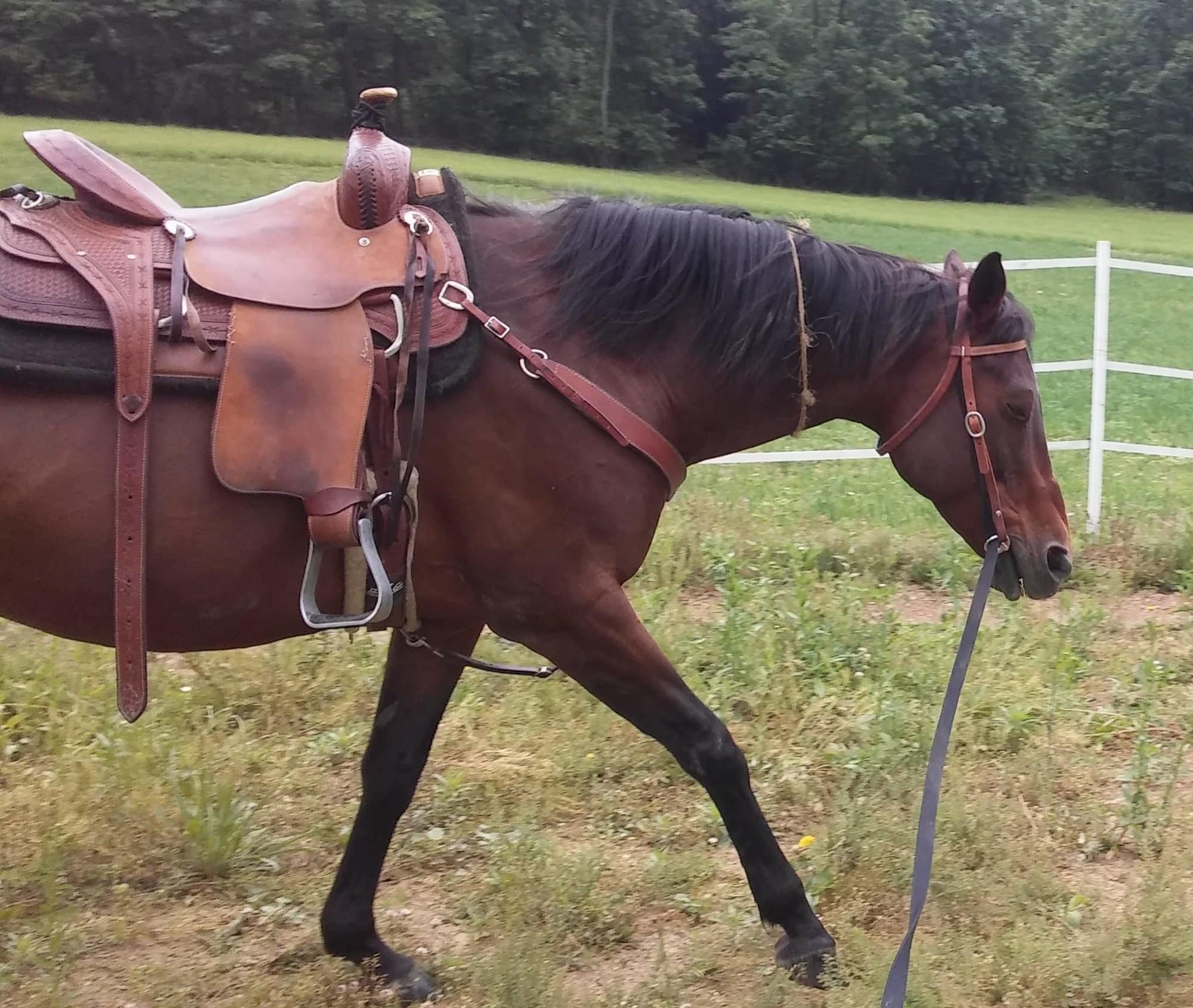

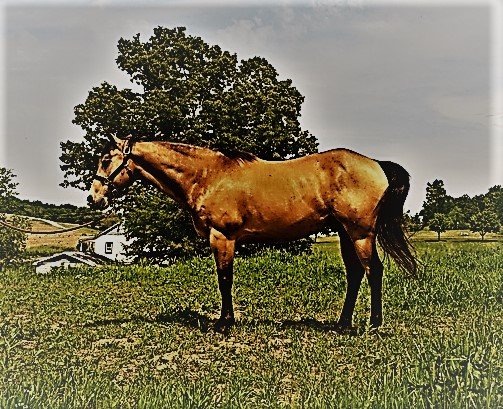
Good teaching article – I like the technique you are using. I prefer using my hand rather than a hand aide. The gentler and simpler always give me the results I am looking for. Bookmarked your article to share with a friend who has just purchased her first mini horse. This technique works with any size horse and will definitely help her when working with her horse alone. I will be working with her and her horse for the first couple of sessions to make sure she is doing it correctly and feels comfortable doing so. Thank you.
I am so very happy to have stumbled upon your blog at the time I am starting a three year old and saddling my 2 year old. I am sold on your concept and will definitely try it on both of the babies!